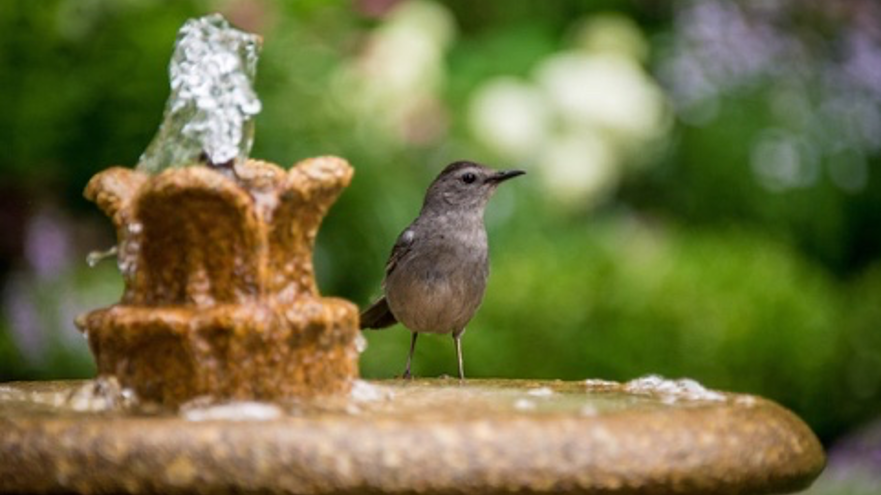JULY Plant Care Checklist

Provide a clean water source for thirsty birds and bees. Photo: Dan Wayman, unsplash
Maintenance and prevention
- Monitor soil moisture. The water requirements of plants peaks in July. Established perennials, shrubs, and trees need infrequent but deep watering. Container plants may need daily watering. Learn more about irrigation.
- Adjust watering schedules monthly, according to the weather and changing needs of your plants.
- Mulch garden and vegetable beds to protect them from summer heat, reduce watering needs, and keep the weeds down.
- Lightly fertilize summer growing succulents if needed, such as Agave and Echeveria. Learn more about caring for succulents. Cactus and succulents are drought tolerant, but many appreciate some water in very hot weather. Succulents may find full sun to be too strong in some locations, so provide them with some shade if they appear to be struggling.
- Drain standing water from saucers to eliminate mosquito breeding grounds.
- Treat ponds with mosquito repellent.
- Provide a water source such as a bird bath for thirsty birds and bees.
- Raise the cutting height of lawnmower 1 to 1.5 inches to help grass survive drought and heat (encourages deep roots and reduces water demand).
- Leave lawn clippings on the ground for nutrients and as a mulch layer. Learn more about lawn care.
Pests and weeds
- Control powdery mildew, a fungus that likes dry summer conditions. Spray susceptible plants with a horticultural oil or biological fungicide. Follow package directions.
- Monitor whiteflies — use sticky traps, thin out dense branches for air circulation, and use earth worm castings to discourage them. Using a reflective mulch or strips of foil will help repel them.
- Check shade shrubs for thrips.
- Check fuchsias for fuchsia mite. If found, cut back 6 inches beyond the infected site.
- Set yellowjacket traps at the perimeter of the yard (not near eating areas) to discourage yellowjackets from visiting.
Planting and propagating
- Pinch off spent flowers on perennials and annuals to encourage repeat bloom.
- Pinch back chrysanthemums to encourage branching and increased bloom. Leggy impatiens and coleus also benefit from being pinched back.
- Dig up and divide overcrowded bearded irises.
- Dig up overcrowded bulbs after the foliage dies. Store bulbs in a cool, dry place for replanting in fall.
Feed and fertilize
- Feed azaleas, camellias, and rhododendrons with a balanced organic fertilizer formulated for acid-loving plants.
- Feed container plants if needed, using an organic fertilizer.
- Feed citrus if needed, using an organic fertilizer.
Edibles
- Plant beans and summer squash.
- In cooler areas, plant broccoli, cabbage, chard, collard greens, kale, lettuce, bunching onions, and peas.
- Learn more about crops to plant in July and other activities in the edible garden.
Fire-smart Landscaping
- Move wood mulch 5 feet or more away from the perimeter of your home and any other structures on your property. Place non-combustible mulch in that area instead.
- Learn more about Fire-smart Landscaping.
